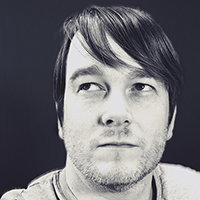A better question to unlock a more ambitious strategy
How you frame you goal can mean the difference between it being failure and achievable

As we set our own goals we start to ask the question. “Can I achieve…”. I often see people say, “can I get to 4,000 Twitter followers by the end of the year”, or “can I make $1,000 monthly revenue on my product”.
While these types of questions are great, it unfortunately limits your thinking making you less likely to find a way to achieve it.
Goals vs Strategy
Now think of working with a team who have quarterly objectives. Their goals may be set out like the following:
- To increase website traffic by 10%
- To get 20 signups a day to the mailing list
- To get 20,000 monthly YouTube views
- To get 500 social likes in a 28 day period
If you see a strategy that looks along these lines, then consider that it’s more of a wish than a strategy.
A failure to believe the goal
If you’re now poised with the task to make the goals happen, it is easy to feel that they are unattainable. You may believe that they are too ambitious. You may not know how to action them. The consequence of this is that you’re unlikely to put the time and attention in to make it happen. You’ll procrastinate. And you’ll fail at your goal.
Others may look at the strategy and conclude that it’s just not possible and will fail to support it in the way it deserves.
Imagine you’re pitching to your boss to implement a new social media strategy to get 50,000 new fans for the brand. Your boss may simply disbelieve that it’s possible and not support the project.
Frame it as a ‘how’ question
I’m a believer that you can unlock a much better strategy by framing the goal as a question. As a ‘how’ question. And let everyone involved be part of the process to get their buy in.
Let’s look at an example.
Goal: Get to 100,000 YouTube subscribers
You can now frame this as a question:
How can we increase the number of YouTube subscribers to 100,000?
It now prompts more thinking to solve the problem. You (or your team) may now start to ideate the following:
- Make daily videos
- Make 70% of the videos based on topics that people search for
- Create a better hook to improve watch time
- Editing and storytelling to improve the watch time
- Relate videos to keep viewers watching related content on the channel
Hopefully you can see now that it’s no longer an abstract goal but a more concrete strategy, all by framing it as a how question. These ideas now form part of the strategy.
A second layer of resistance
As you elaborate on the solutions, you may start to see a second layer of resistance. For example, “there’s no way we can make a video a day”.
Now you repeat the process…
How can you produce daily videos?
The solution follows the same ideation process to overcome the limitation…
- Batch the recording and editing
- Outsource the editing
- Hire more talent to work on it
- Create pillar content pieces but edit it to daily YouTube shorts
By doing this you start to break down the objections that limit thinking. You get to fully explore more novel ways to achieve ambitious goals.
Todays Ah-Ha moment
Don’t just have a wish list of goals. Instead frame it as a “How can I” question and explore many different ways to solve it. Repeat the process until you have clear and concrete actions for you to take, no matter how ambitious the goal.

Want to level up your note-taking and be a deep meaningful thinker? Check out my book Atomic Note-Taking.

